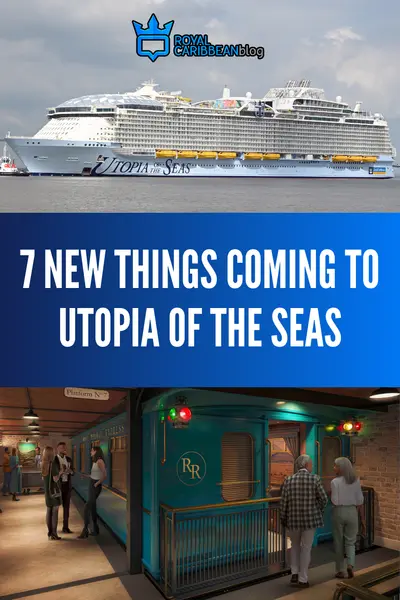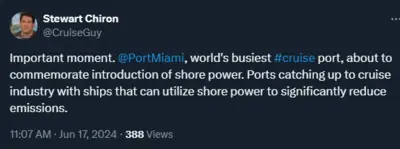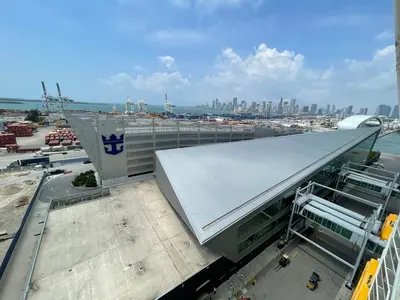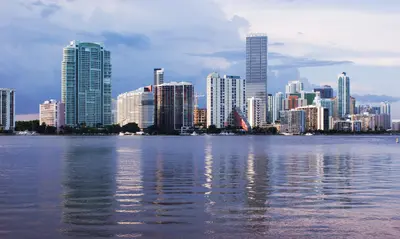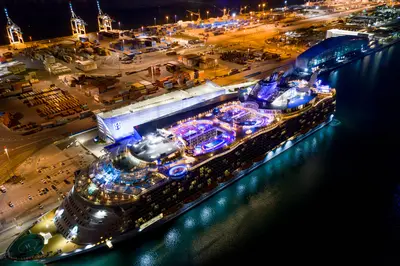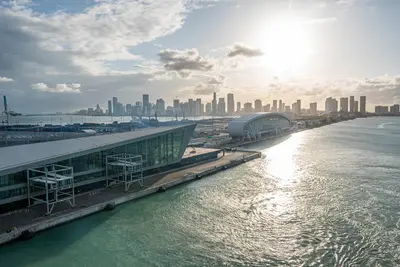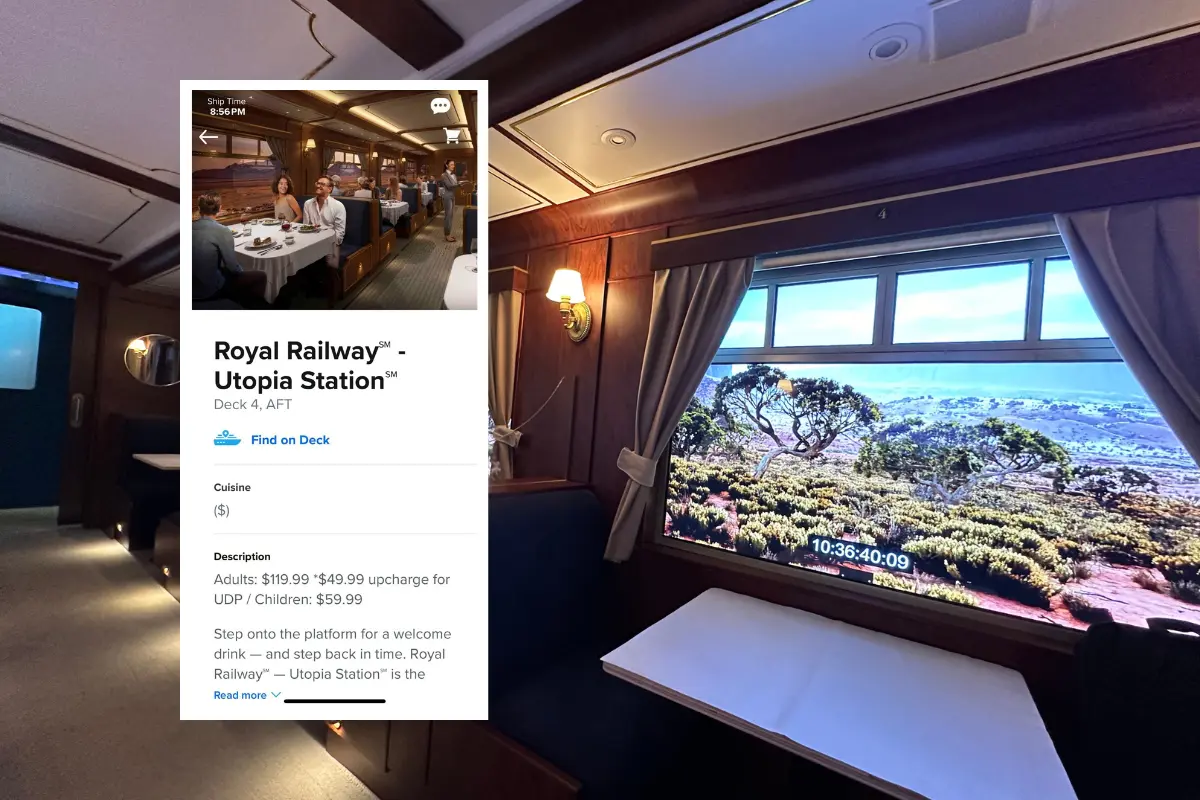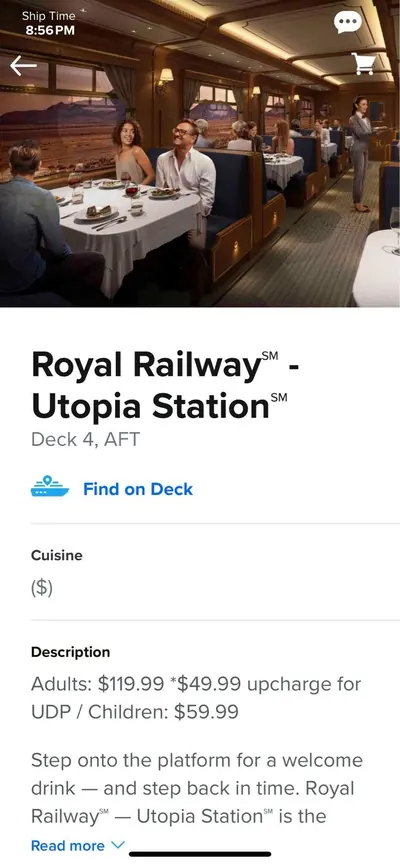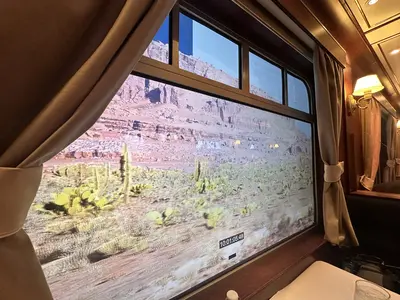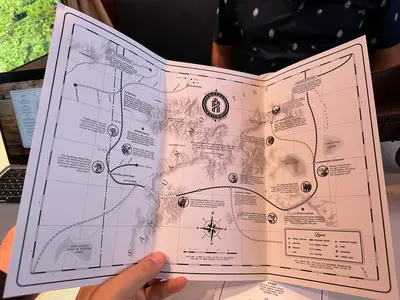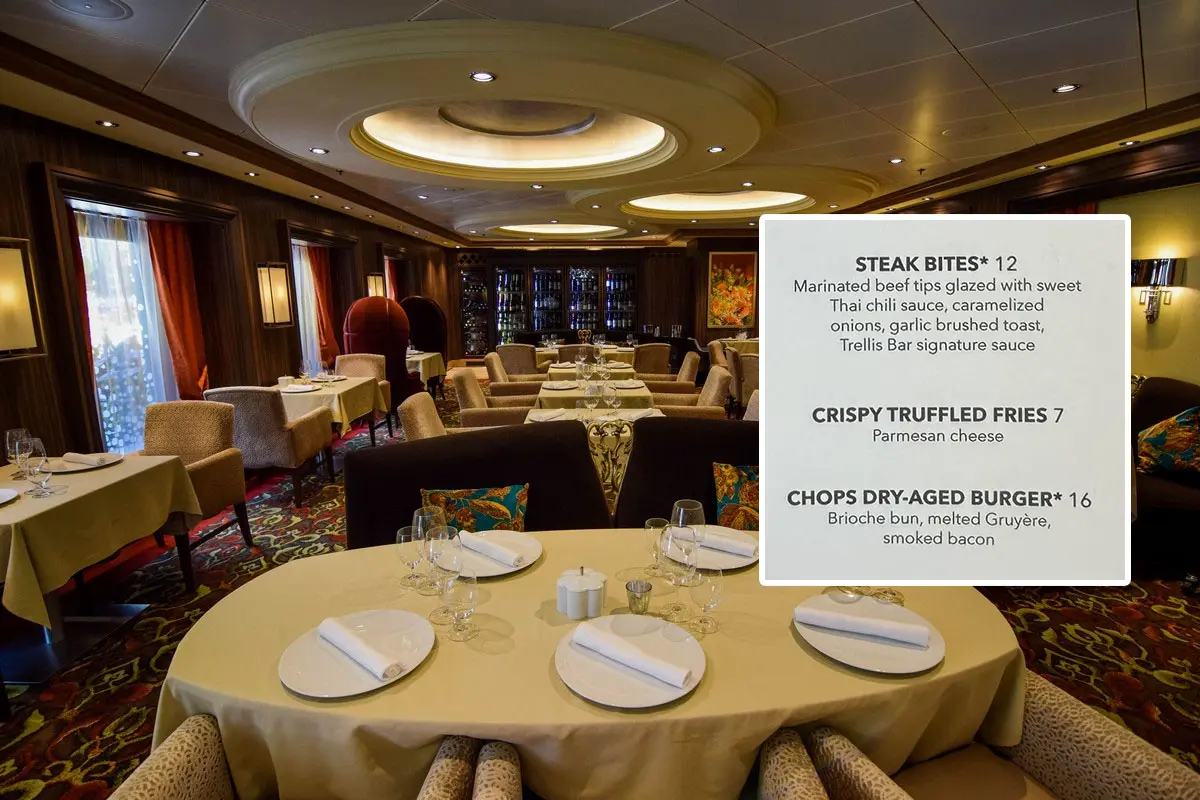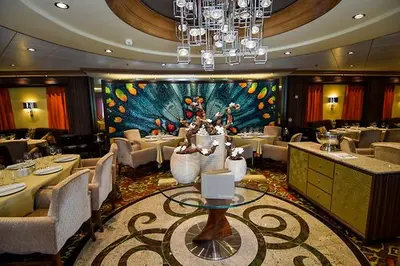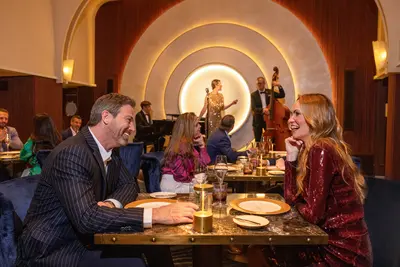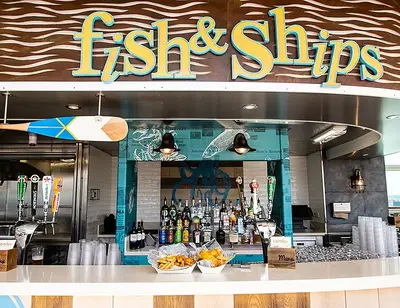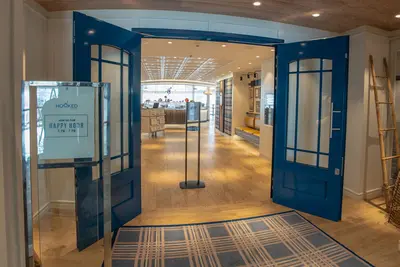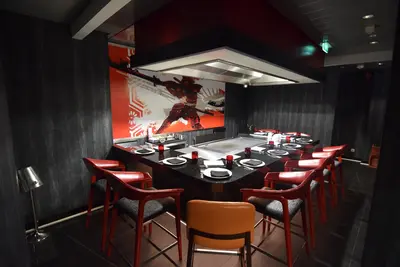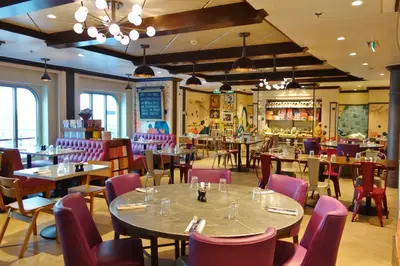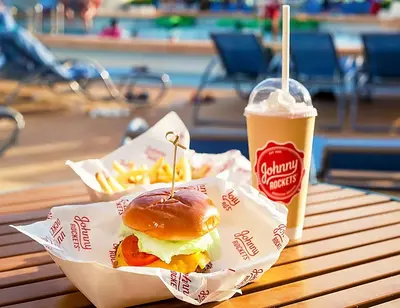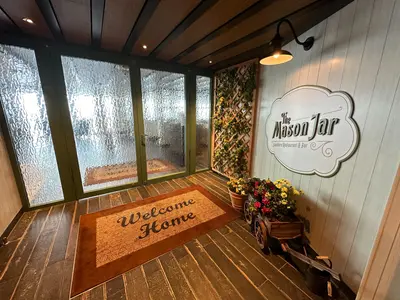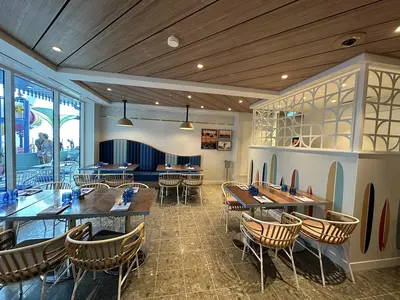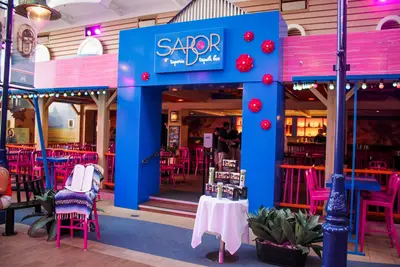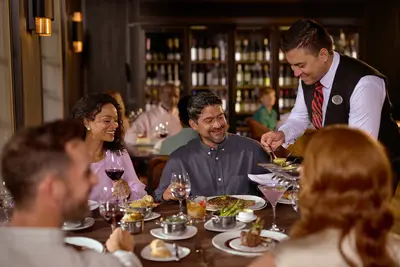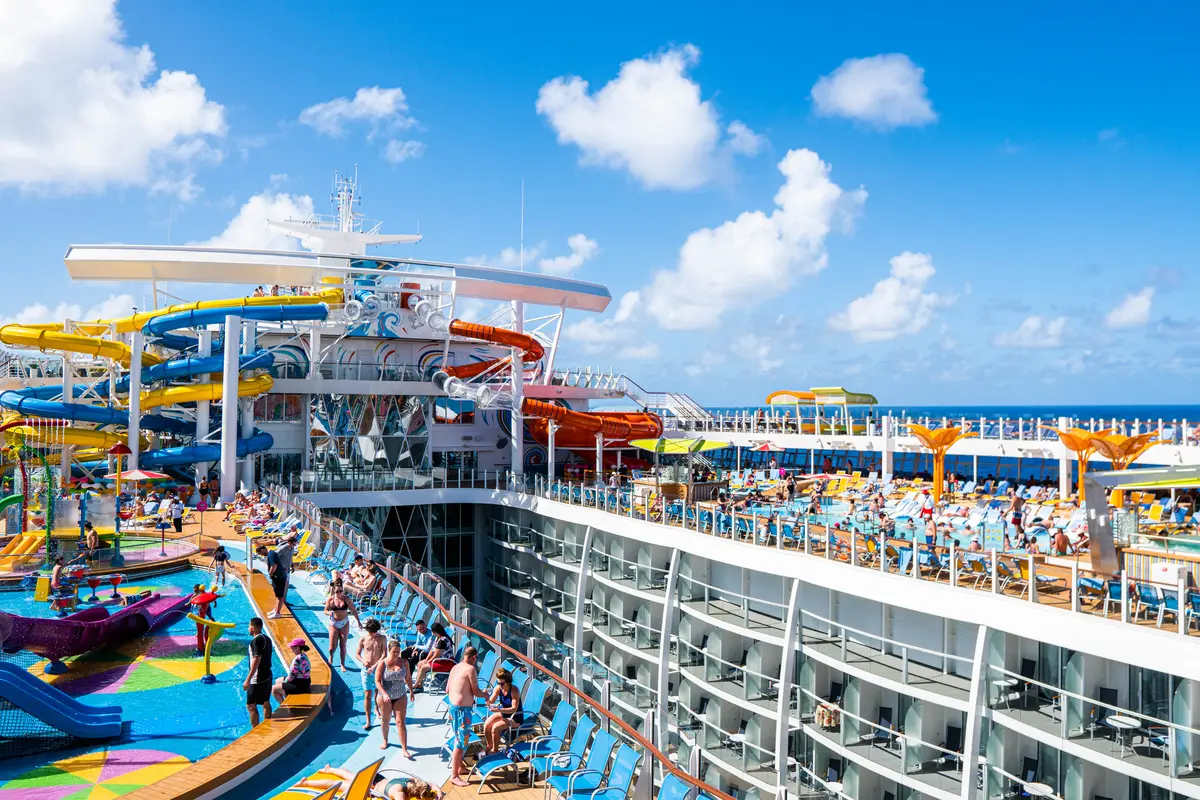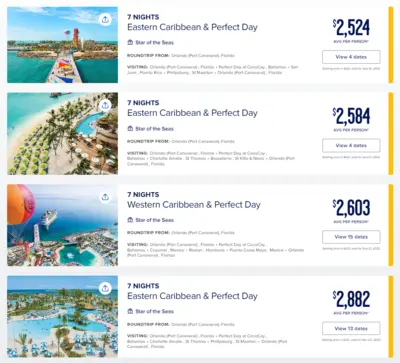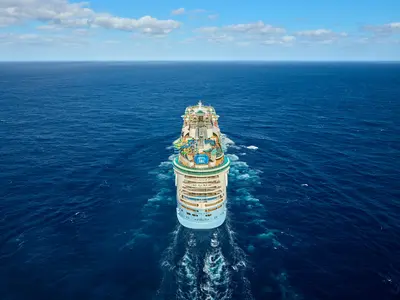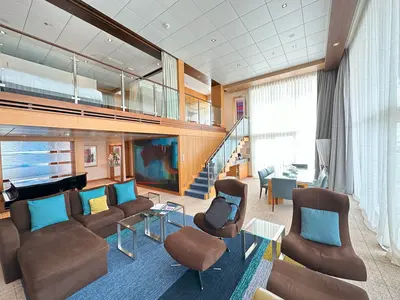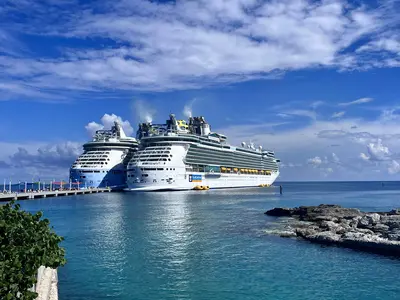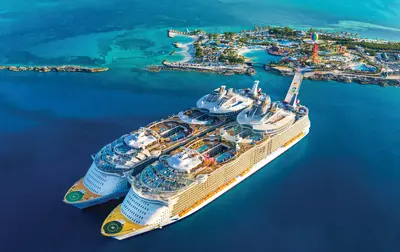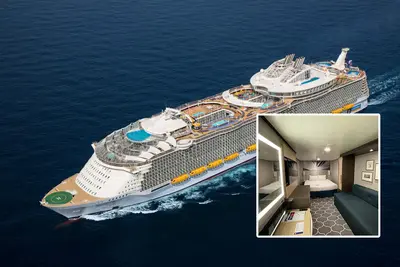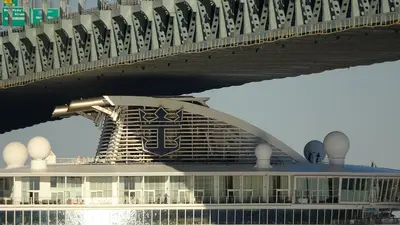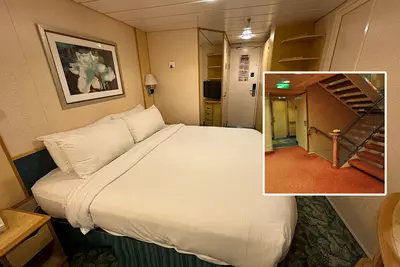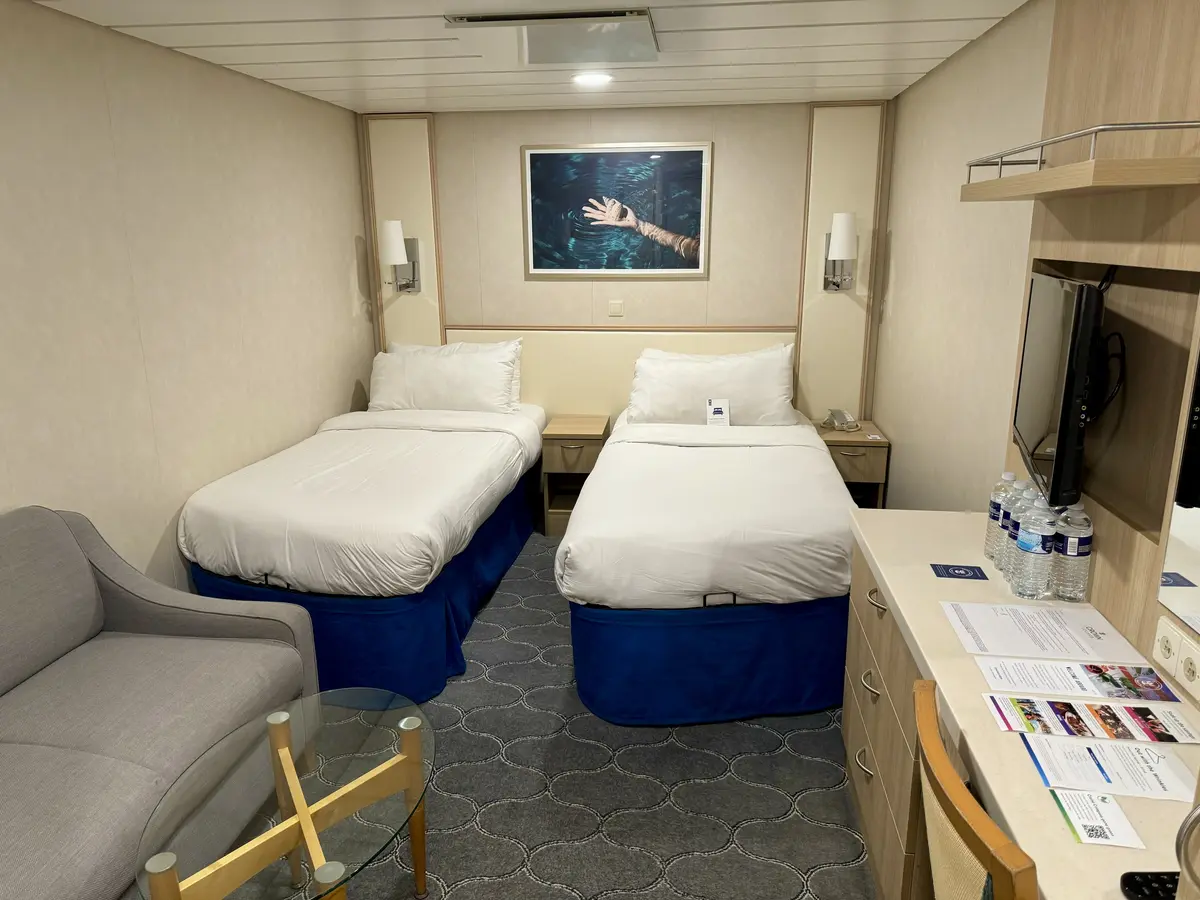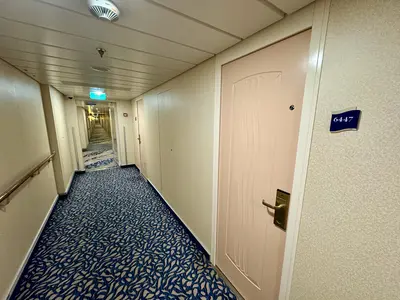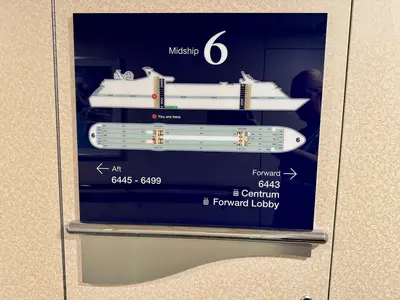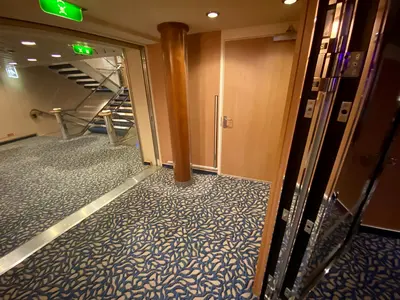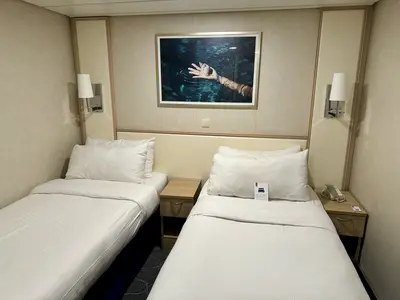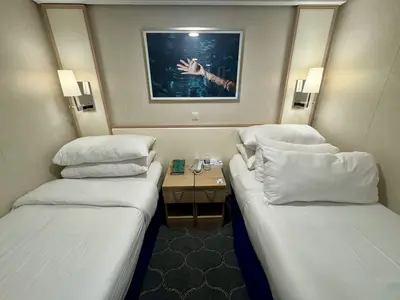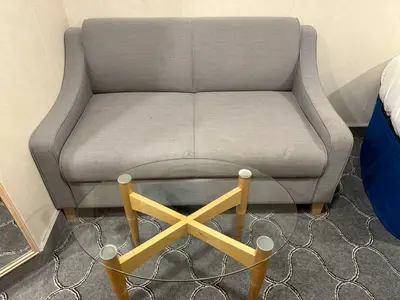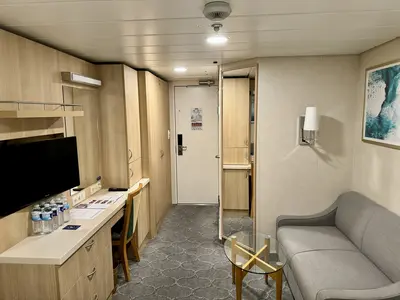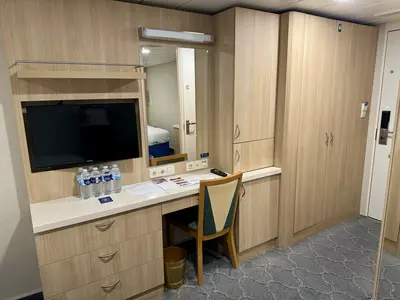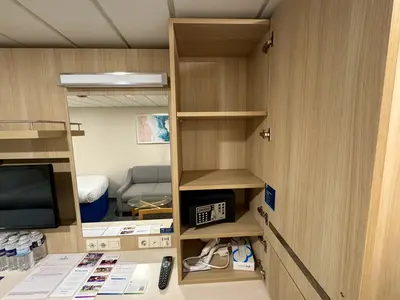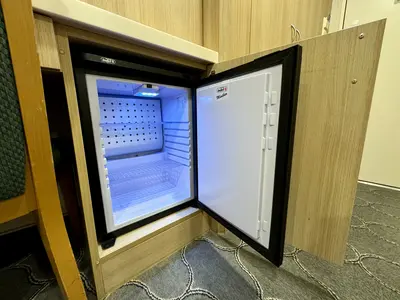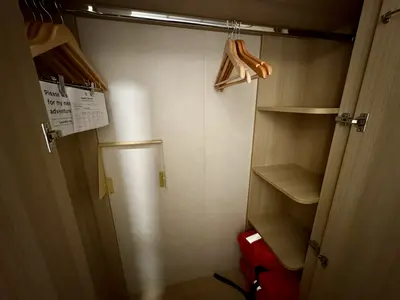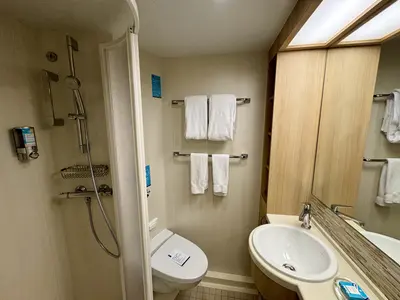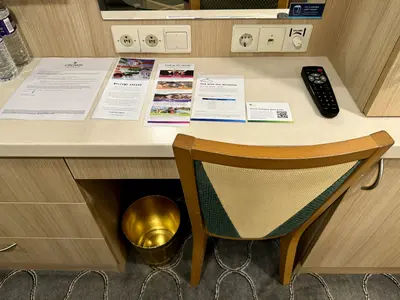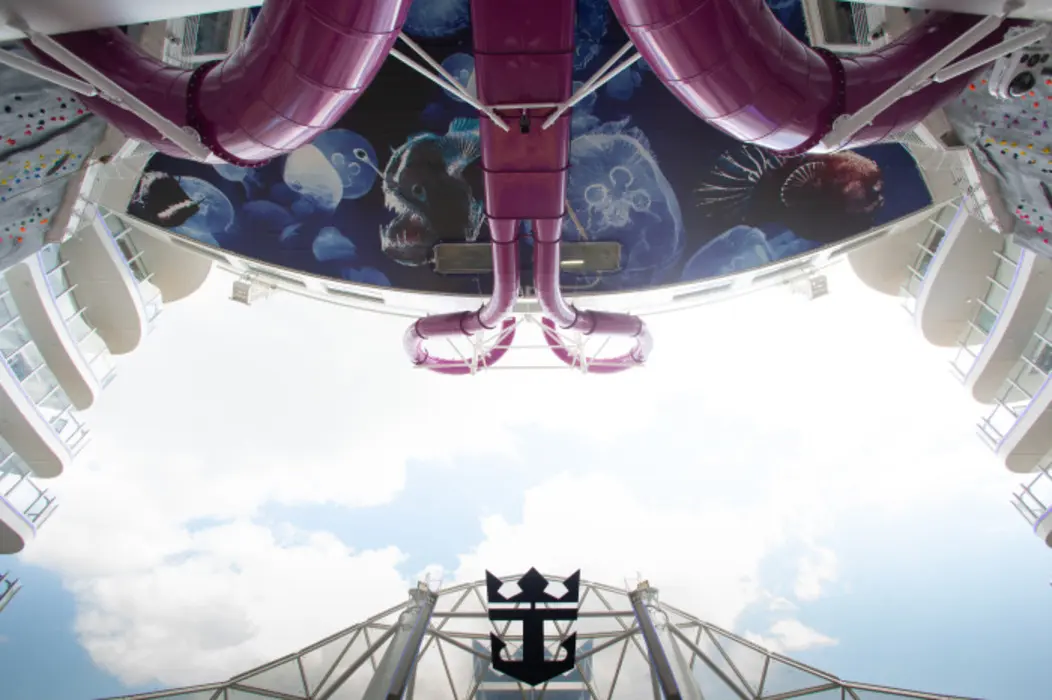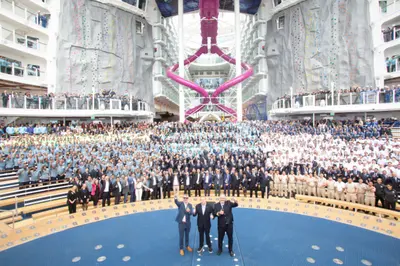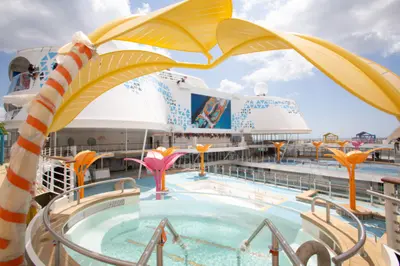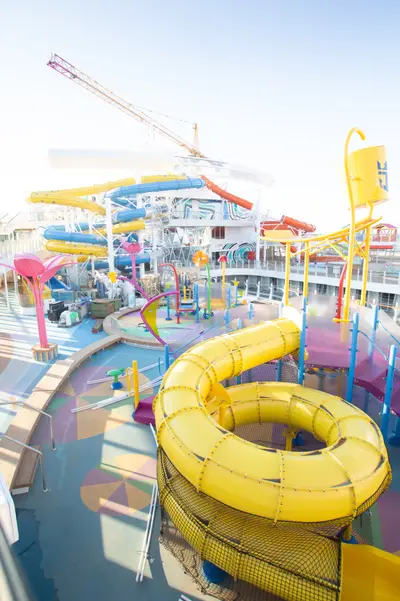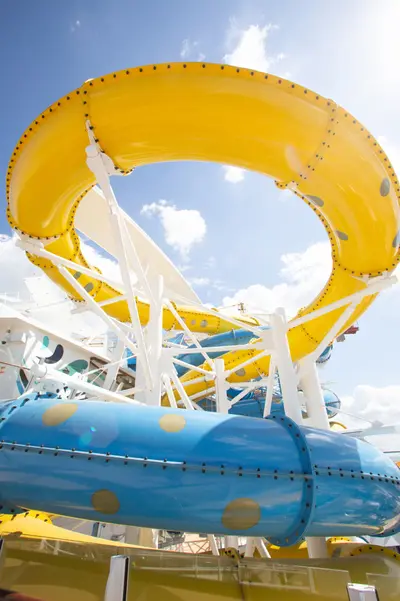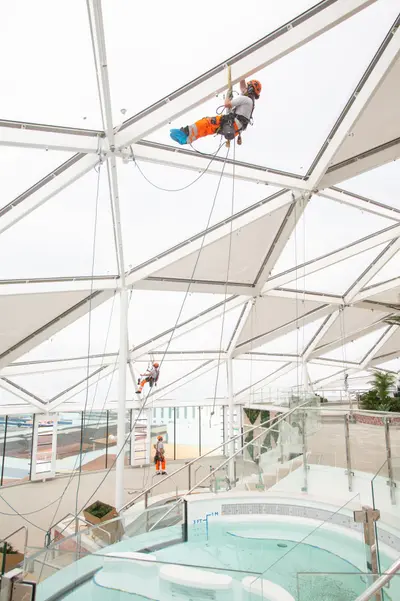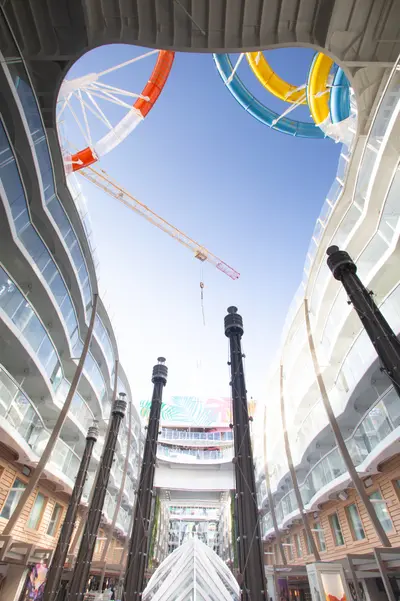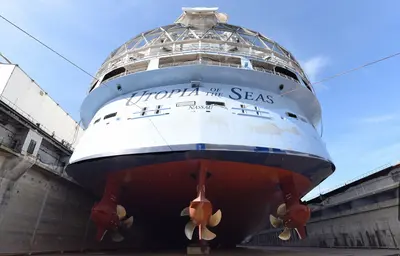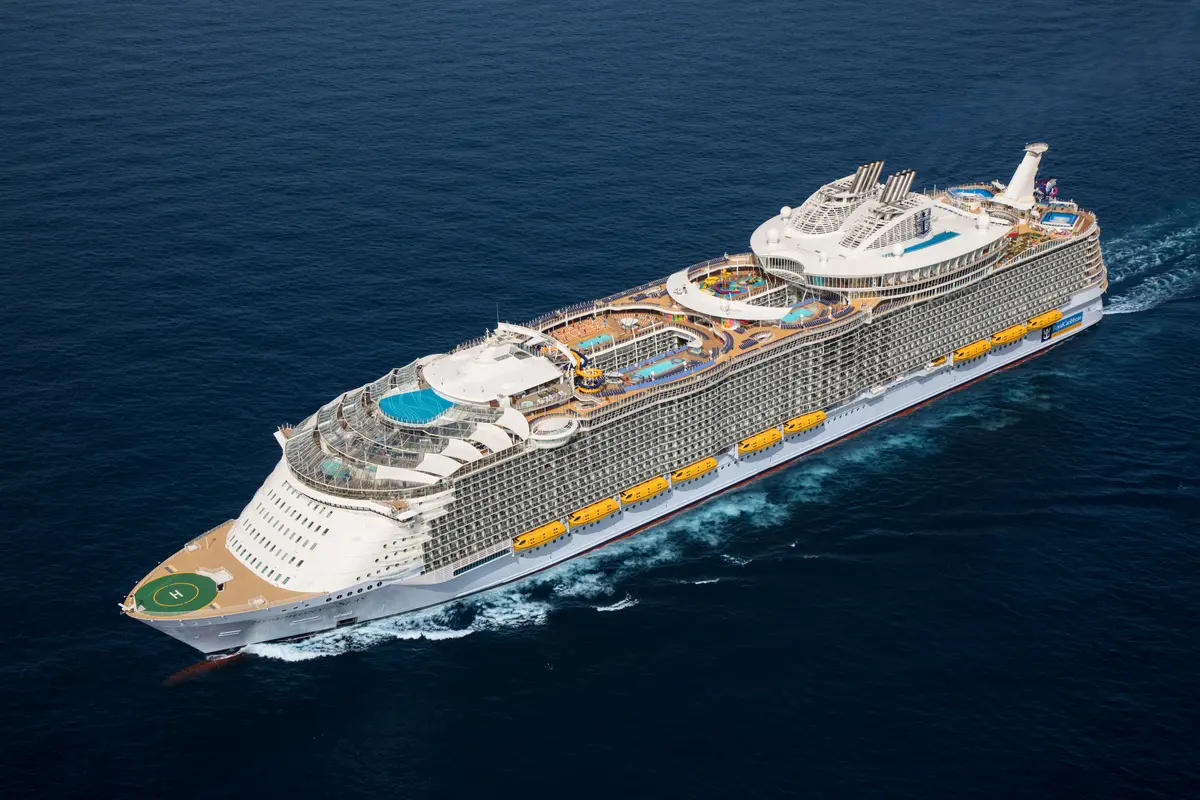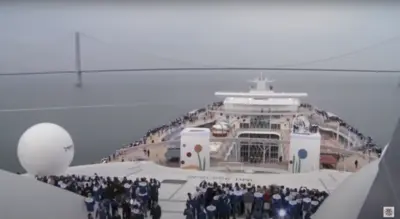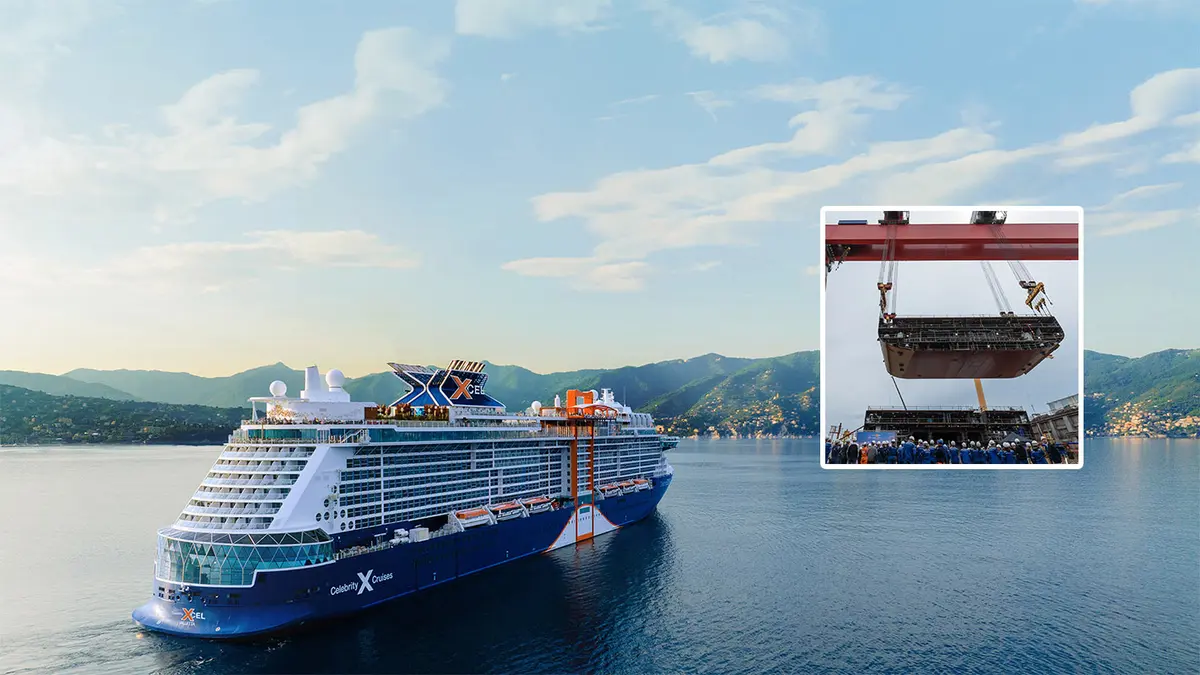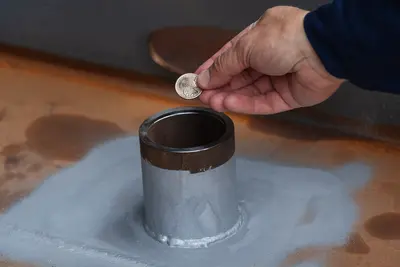7 new things coming to Utopia of the Seas, including a giant slide and train restaurant
In:Royal Caribbean has long been the ultimate choice for a family cruise vacation, and for the first time, they want to appeal to those who may be hesitant to book a weeklong cruise with the introduction of Utopia of the Seas.
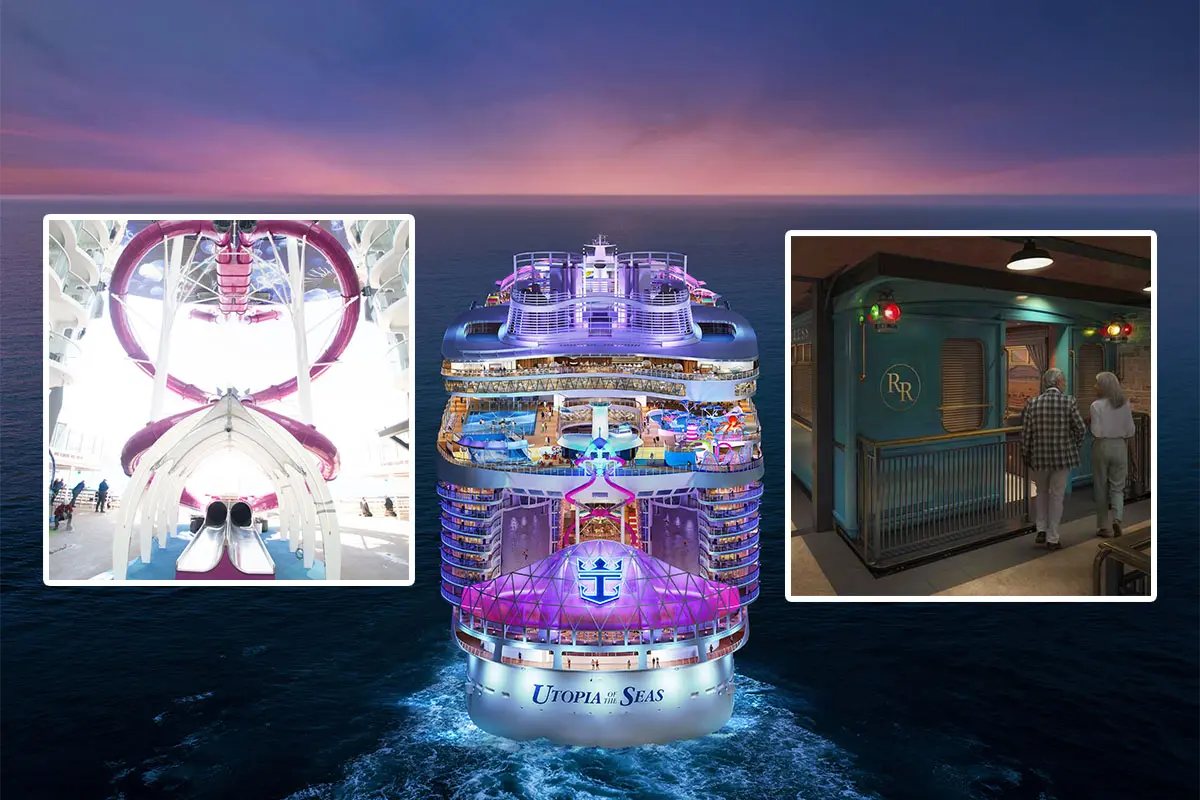
The 236,860 gross registered ton (GRT) vessel is just weeks from hitting the high seas, boasting new features that cannot be found on any of the other five Oasis Class ships.
Historically, new ships enter service sailing weeklong itineraries. Utopia, however, was designed as "The World's Biggest Weekend," offering 3- and 4-night cruises to The Bahamas, including Royal Caribbean's award-winning private island, Perfect Day at CocoCay.
Here are 7 brand-new things coming to Utopia of the Seas.
Solarium Suites

The Solarium Suites aboard Utopia of the Seas are one of more than 20 stateroom categories. Measuring 839 square feet, they feature an infinite verandah design, meaning that instead of walking outside onto your private balcony, you can enjoy the ocean's breeze from the comfort of your cabin with the push of a button.
Perched atop the bridge's wings at the front of the ship, guests can soak in 280-degree views inside the two new Star Class suites that accommodate up to four passengers. As the name suggests, they're just steps away from the adults-only Solarium, offering a tranquil retreat from the lively pool deck.
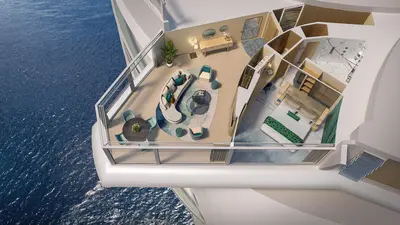
Royal Caribbean's Royal Suite Class comprises three tiers: Sea, Sky, and Star. Those within the Star Class come with the most perks, from priority boarding to a private butler (Royal Genie), access to the suite-only sun deck and restaurant, complimentary beverage and Wi-Fi packages, and so much more.
With the enhanced benefits comes a hefty price tag. A Solarium Suite onboard the November 3, 2025 sailing costs $3,788 per person, totaling $7,779.50 for a party of two for a 4-night cruise.
Read more: 4 Ways to Tell If You're Getting a Good Deal on Your Cruise
Royal Railway - Utopia Station
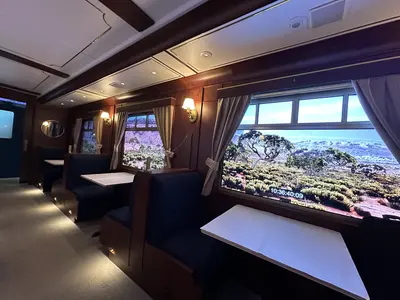
Utopia of the Seas will be home to the only immersive train car dining experience at sea. From the specialty cocktails to the unique menu curated based on the time and region you're "traveling" through, Royal Railway - Utopia Station is more than your standard specialty restaurant.
The steam on the platform and various effects on the train are meant to trick everyone's senses during their journey. Every seat, for example, is equipped with a "butt-kicker" timed with the story. Additionally, Royal Caribbean is working on incorporating scents into the experience to make it a multi-sensory adventure.
Don't worry, though—the storyline unfolds in intervals to allow for downtime to enjoy your meal with your travel companions.
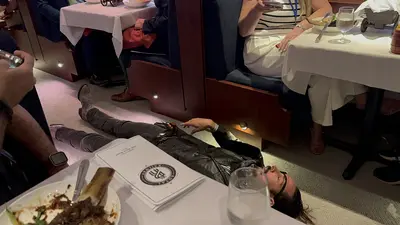
Dining at the brand-new specialty restaurant costs $119.99 per adult and $59.99 per child. Those with an Unlimited Dining Package (UDP) can pay a $49.99 surcharge for the dining experience.
Izumi in the Park
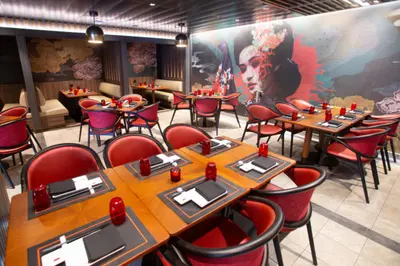
From fresh sushi to a fun teppanyaki experience, Izumi has become a guest favorite across the fleet. For the first time on an Oasis Class ship, Izumi will be located in Central Park, and with six teppanyaki tables, the Izumi aboard Utopia of the Seas will be the largest in the fleet. Plus, the new private Omakase-inspired experience will feature a multi-course meal paired with sake cocktails.
Guests can also get sushi to-go at Izumi in the Park. Though not a new concept, as it debuted on Icon of the Seas in January 2024, Izumi in the Park on Utopia is an Oasis Class first.
Whether you're craving a classic roll, hot gyoza, or even a soft-serve bubble cone, you aren't limited to dining at Izumi. Instead, you can take your food to-go and eat on the pool deck, your cabin's balcony, etc.
Read more: Utopia of the Seas restaurant and dining guide
Longest dry slide at sea
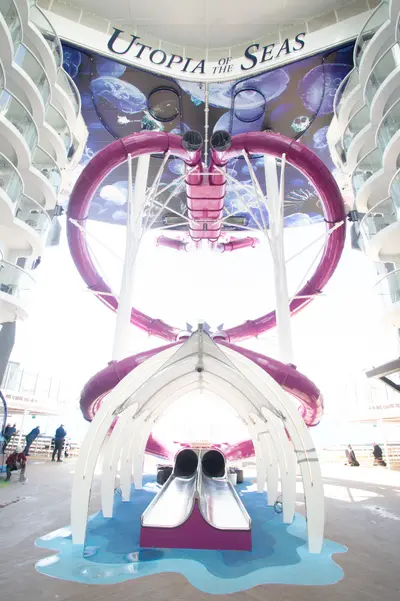
After MSC World Europa stole the title of having the longest dry slide at sea, Royal Caribbean tweaked the Ultimate Abyss' design to be nine feet longer than the 250-foot Venom Drop.
Measuring 259 feet long, Utopia's 10-story Ultimate Abyss will be 43 feet longer than the slides on other Oasis Class ships and about 10 times longer than a London double-decker bus. Moreover, they've incorporated transparent racing windows and zoom booster rollers for a "surprise" exit on the Boardwalk.
The two slides were manufactured in Germany, while the iconic anglerfish was built in Germany. The latter stands 22 feet tall with 36 teeth.
Poolside "food truck"

Compared to cruise lines like Carnival, one of the most common critiques Royal Caribbean has received over the years is that they don't have enough fast-casual dining options.
Though venues like El Loco Fresh have been added to some ships, Royal Caribbean still lacks the variety that Carnival's lido deck offers, including fresh tacos from BlueIguana Cantina, juicy burgers from Guy's Burger Joint, and crispy chicken sandwiches from Big Chicken.
With the introduction of Utopia of the Seas, they're addressing the feedback by adding a new poolside "food truck" venue called the Spare Tire. Rather than venue to the Windjammer or stick with Mexican fare, guests can enjoy complimentary "handheld favorites" like pulled pork sandwiches, cheeseburger flatbreads, daily rotating desserts, and more without straying far from the pool deck.
Read more: Things I wish Royal Caribbean would copy from other cruise lines
Pesky Parrot

Replacing the Bionic Bar, the Royal Promenade is set to get a new Caribbean-themed bar called the Pesky Parrot that will serve tropical libations with rum, tequila, and gin.
There will be frozen beverages, too. The central location promises it will become a favorite for guests onboard, whether stopping in for a pre-dinner drink or refreshing afternoon cocktail. Though not included with the cost of your cruise fare, Royal Caribbean's Deluxe Beverage Package can be used here.
According to Royal Caribbean, Pesky Parrot will feature other "surprises;" however, they haven't been revealed yet.
Two-story Giovanni's
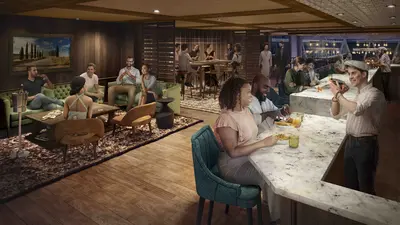
Fans of Giovanni's Italian Kitchen & Wine Bar will appreciate the two-story dining venue featuring Gio's Terrazza, an outdoor terrace overlooking the Boardwalk Neighborhood, allowing guests to dine al fresco while enjoying authentic Italian dishes.
This is an extra-charge venue, meaning you have to pay extra to dine at Giovanni's. The coverage charge for dinner is $54.99 per adult and $14.99 per child; however, lunch is cheaper, costing just $24.99 per adult.
If you're interested in eating at Giovanni's Italian Kitchen on your upcoming Utopia of the Seas cruise, you should book your reservation in advance through the Cruise Planner. Not only does utilizing the Cruise Planner allow you to secure your desired dining time, but you can also take advantage of any pre-cruise discounts.
Read more: How much does Royal Caribbean specialty dining cost?
